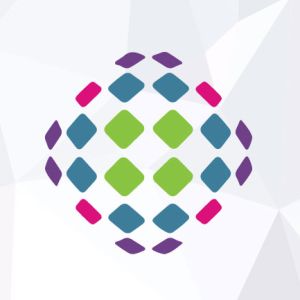Drug Discovery Market - Global Industry Insights, Trends, Top Players 2018-2026Posted by Rajkumar on March 29th, 2019 Advancements in the field of biotechnology and pharmaceuticals, in order to identify active ingredients in the form of drugs through drug discovery process, is gradually gaining pace in the market. This drug discovery process involves screening of chemical libraries, identification of the active ingredients for a natural remedy or by serendipitous discovery. Emergence of new diseases, which include viral or infectious diseases leads to high demand for drug discovery for these conditions. However, development of drugs is complex, costly, and risky process. Download PDF BrochureOf This Research Report @ https://www.coherentmarketinsights.com/insight/request-pdf/1631 The objective of drug discovery is to recognize the investigational drug success rates by stages, pre-clinical studies, investigational new drug application-Phase I, Phase II, Phase III studies, new drug application, and phase IV studies. The success during drug discovery process is very low, as according to data published by Journal Research & Review 2016. According to the data, it was estimated that among 5,000-10,000 drug discovery screening, only 250 enter the preclinical testing and 5 enter the clinical testing and only 1 drug is approved by the regulatory body, which takes roughly 5-10 years. Drug Discovery Market Dynamics: A patent cliff provides an opportunity for manufactures to collaborate and participate in current drug discovery model to sustain in the market. Manufacturers such as, Eli Lilly, Pfizer, Takeda, Bristol-Myers Squibb and Gilead lost their patent in 2017, with some of their respective big sellers that cover a range of indications such as multiple sclerosis, HIV, erectile dysfunction, and cancer. Such patent loss forces companies to introduce innovative products to retain their revenues and increase their revenue. After patent expiration, generic manufacturers enter the market and provide drugs that are equivalent to the innovator’s drugs, however, at a significantly lower price. Therefore, manufacturers are focusing on developing new and innovative products to sustain in the competitive market. Increasing prevalence of wide range of disease such as cancer, cardiovascular, and CNS-related disorders with patent expiration of blockbuster drugs are some of the driving factors for growth of the drug discovery market. According to the World Cancer Research Fund International, 2015, an estimated 124,000 new cases of myeloma were diagnosed globally in 2015, which accounted for 0.8% of the total cancer cases. The mortality rate of the disease is around 0.9% of all cancer deaths, accounting for 87,000 deaths each year. Therefore, key manufacturers are actively involved in the development of immunotherapies targeting B-cell maturation antigen (BCMA) such as chimeric antigen receptor T-cells (CAR-T cells), bispecific antibodies, and antibody drug conjugates (ADCs). For instance, in 2012, the University of Pennsylvania and Novartis entered into an exclusive global research and licensing agreement to study and commercialize novel cellular immunotherapies using chimeric antigen receptor (CAR) technologies. In 2016, Juno Therapeutics entered into a licensing agreement with Memorial Sloan Kettering Cancer Center (MSKCC) and Eureka Therapeutics for developing CAR T cell immunotherapy against multiple novel targets. Drug Discovery Market - Regional Insights: North America accounted for the largest share in the drug discovery market, followed by Europe market in 2016. This is attributed to presence of a large number of top pharmaceutical and biotech companies, Pfizer, Inc., Merck, GlaxoSmithKline, Novartis and many more in this region. Furthermore, favorable regulatory framework and regulatory policies for investors for research and development of new drugs augments growth of drug discovery market in the region. The US Regulatory Framework provides for 3 distinct regulatory approval pathways outlined in the Food, Drug, and Cosmetics Act (FD&C Act), which allows the registration of novel compounds, new drugs containing similar ingredients to previously approved products and generic copies of previously approved products in systematic way helping the pharmaceutical companies to gain approval over the new drugs. Browse Complete Report For More Information @ https://www.coherentmarketinsights.com/ongoing-insight/drug-discovery-market-1631 Furthermore, several pharmaceutical and biotechnological companies are focusing on expanding in Asia Pacific region, to maximize on their R&D efforts as the Asia Pacific region provides better access to patients for clinical trials, with lower cost operational efficiencies. Increasing government investment in research and development is also expected to foster growth of drug discovery in Asia Pacific region. For instance, in March 2011, the Korean government participated in the Korean National Enterprise for Clinical Trials, to advance the country’s infrastructure for conducting clinical trials, which could fasten the process of clinical trials, in turn supporting the growth of drug discovery market. Drug Discovery Market - Competitive Analysis:
About Coherent Market Insights: Coherent Market Insights is a prominent market research and consulting firm offering action-ready syndicated research reports, custom market analysis, consulting services, and competitive analysis through various recommendations related to emerging market trends, technologies, and potential absolute dollar opportunity. Contact Us: Mr. Shah Coherent Market Insights 1001 4th Ave, #3200 Seattle, WA 98154 Tel: +1-206-701-6702 Like it? Share it!More by this author |


